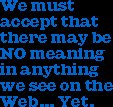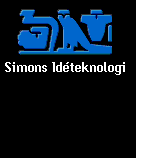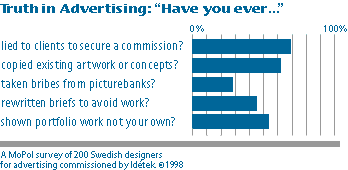 |
What we need in this Information Age is to forget notions of seeking
authenticity in text or pictures. Because this is really the Disinformation
Age.
There is an information 'landscape' which, like a real landscape
has no formal message. It just is. Having no sense does not make
it nonsense. So this 'information landscape' is best addressed
as 'music' - sensuality masquerading as content.
We always seek to find meaning - even where there is none. The
search for meaning is an automatic, minute-by-minute mind process.
And incongruities are always explained by the mind. The conscious
mind is the best fictioneer there is!

How do children learn to speak Swedish? Or Chinese. They swim
in it. They know no rules and yet they acquire all rules.
A language is a communication structure. But you don't need to
know the rules to use it. But you do have to swim in it to become
proficient.
Vision communication is also a proto-language. There is capability
for an iconographic vocabulary, a grammar. And like all languages,
vision language is being learned. Some of us are visually illiterate.
But we are being forced to become literate very fast. Because
a visual language is emerging out of the new media, driven by
the cross-cultural efficiency of pictures in a matrix of diverse
cultures still using languages and alphabets devised for entirely
different circumstances. However it is still almost exclusively
North American history that has been raked for icons. Just as
the language of IT is English, so the images are essentially WASP.
The Japanese artist Hokusai, was brilliant, but he switched visual
languages in later life. His view of the world was governed by
a very strong autopilot called Mr Axonometric. Hokusai knew nothing
about the rules of perspective used since the mid 15th century
in Europe. Late in his career he learned it from the Portuguese.
There is a sequence of prints that he made, in which he played,
falteringly, with his new discovery. His view was changed forever.
An African tribe saw their first film, of their village, in the
1930's, projected at night on a sheet. In it there was a basic
cinematic visual device called a 'pan'. The camera swept slowly
across the forest. The Africans were amazed. 'How can the trees
walk!' they asked. They were cinematically illiterate.
In the evolution of proto-languages, the first colour named is
usually 'dark', then red, followed by blue. Does it mean that
because a colour is not named - it is not seen? Probably.
In today's multimedia world, we are also not seeing. We are still
learning the eliding devices of visual communication. We are dealing
with an emerging language. Most of the new communication phenomena
are not yet named. We can't see the wood for the trees.
But we must not be confused by the amount of data.
There is a common oft-quoted misconception that a seven-year old
today knows more of the world than his or her grandfather. But
the brain hasn't changed its handling capacity. In terms of pure
data, seven year olds, down through the ages, have handled the
same amounts.
The difference is that data 'appears' to be more structured today.
There 'appears' to be more meaning. There is not more meaning
- there is a different meaning. And it is far less structured
than we believe.
200 years ago, a seven year old looked at the shimmering leaves
in the trees, the rippling water of the brook, the amorphous shapes
of the clouds above and... wondered.
Today's seven year olds are surrounded by shimmering, rippling
and amorphous shapes of a different electronic kind. And they
are still wondering........
We are immersed in a new language, knowing nothing of it's structures,
but like three year olds - we are picking it up as we go along.
But there is a structure there to be discovered. And THEN we will
be able to use it to convey meaning.
The chart 'Truth in Advertising' is totally bogus.

|









![]()
![]()







